Goal-setting as a process
This presentation, delivered by Harwood Union High School teacher Lissa Fox at the 2016 Middle Grades Conference, describes an Action Research project that looked at the implementation of a one-semester 9th grade course focused on goal setting within Personal Learning Plans (PLPs).
Fox sought to use goal-setting as an entry point to cultivating critical thinking and self-directed learning in her students. She strived to help students set goals that were meaningful and focused on learning, rather than performing to an external (and perhaps somewhat arbitrary) standard. In the language of goal orientation theory, she focused on mastery goals rather than performance goals.
I heartily agree with her approach: helping kids focus on personal mastery encourages them to love learning for its own sake. And students are less likely to be competitive and afraid to look stupid when than when external ratings of performance are central. Fox found that her students were not used to “doing school” this way, however, and they needed a lot more support than she anticipated.
The entire presentation is well worth watching, but if you only have a couple of minutes, check out the implications for practice:
- Cultivate a shift in student mindset – Help students become comfortable with self-directed learning. (10:37)
- Explicitly teach reflection skills – Reflection is a key element in the goal setting cycle. (11:22)
- Take a team approach – Teachers need to work together on everything from developing a vision for PLPs and creating systems for tracking students’ progress. (12:27)
- Establish strong family connections – Families need to be involved at each stage of the goal setting cycle. (13:30)
- All of these implications strike me as perfectly natural during these early days of PLPs in Vermont, as teachers and students move toward personalized learning and try to feel out where goal setting fits. Which makes the pioneering work of teachers like Fox so valuable, especially when they engage in systematic study and disseminate what they have learned.

Transcript appears below.
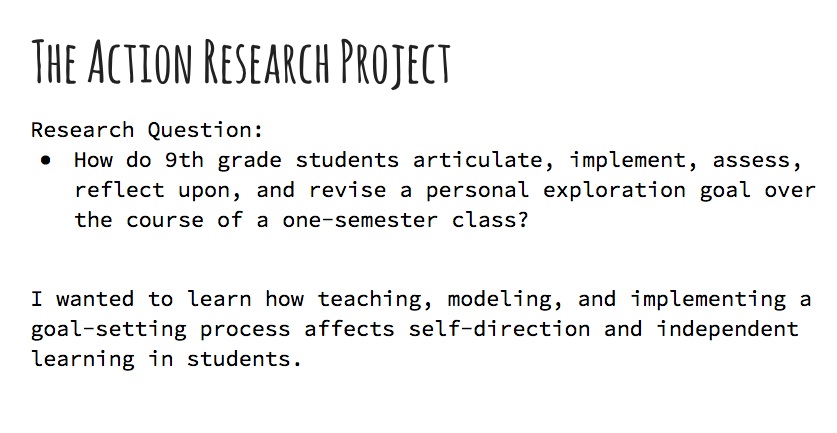
Lissa Fox:
The context of my action research project is I teach at HUHS. I am one member on a 9th grade team and I teach a class called “Personal and Future Exploration.” And this class has been in existence for about 10 years, but it changed pretty dramatically this year.
It’s a one-semester class for all 9th grade students, and the requirement for all 9th grade students to take it is new this year. In the class, students explore who they are, different elements of their personalities, their strengths, different learning style preferences — there’s a huge component of it where they explore different careers and do a job shadow. Exploring different possibilities that could exist for them beyond school.
They also set academic, career and personal goals, in part to develop a personal learning plan (PLP).
This is the first year students have had to develop a PLP at Harwood.
And it’s the first real introduction many students have had to what a PLP is.
My research question was around goals, and how do students articulate, implement, assess, reflect upon and revise a personal exploration goal over the course of a one-semester class. I focused on personal exploration because I really wanted students not to feel constrained by academic goal limitations. I wanted them to really think about something they wanted to learn more about, and explore that within the class.
I also wanted to look into the goal-setting process itself, and how giving students the opportunity to work on a goal that was structured and they had time to work on in class would affect their sense of self-direction and whether they’d be able to work independently.
Findings
In terms of goal-setting — and I had 62 students — there were three students who set personal exploration goals that were very outside of what they were doing in their classes. And there were only three of them who were able to accomplish their goals or make a lot of progress toward their goals, without help from me or instruction from me other than the occasional checking in.
The goals that I had students write were based on SMART goals — they were really specific. I had them set manageable goals. I had them do action steps to address their goals.
Also relevant: I wanted the goals to be realistic and also achievable in a timely way. So we worked a lot on the structure of the goal they set.
And in terms of the outcome of the goal I really wanted them to focus on identifying a habit or a disposition that they could work on.
So rather than having students set goals that were really outcome-based, like “I’m going to get an A in this class”, I wanted them to work on “What are the habits you can work on? What are the dispositions you can develop?” in order to improve your learning in some way, and then one of the measurements of that might be that your grade improves, but you’re really focusing in on this disposition. Working with students on that did help students identify some habits of work that they could improve. And this was also in tandem with the 9th grade team as a whole starting off the school year talking about habits of work and identifying six habits of work and really emphasizing them in classes, so students were really familiar with what those habits were, and could pinpoint: “This particular habit is going to help me improve in this particular area, to get the A or improve my performance.
Despite being able to identify what habits of work the students wanted to focus on, the outcome was still really related to, in most cases, getting the grade that they wanted, instead of improving their understanding in a certain area. So “I still want the Honors designation” rather than “I’m going to improve my understanding in reading”. And so in terms of improving their understanding they’re still really interested in the idea of getting the grade rather than being intrinsically interested in learning and wanting to explore their knowledge.
That focus was still on “How did I do?” and “What’s the final assessment?” rather than “What did I learn from this?”
In terms of the goal process, one thing that I found is that as a 9th grade team we hadn’t talked to each other about what students were going to be doing in their classes around goals. And what I discovered was that about three weeks into the semester when I started talking to students about goals they’d already set goals for each class. Multiple goals. For each class. And the formats were different.
So the format that I wanted students to use, which was much more structured than some of the others, was a little overwhelming for them, along with the number of goals that they had to manage.
Involving families in the process was a part of my action research project; I had students do a family conference, at home, and record it, sharing their goals with their families to get some feedback. And one of my findings was that many students did that family conference, but the feedback loop had to be maintained — and it wasn’t. They had that initial conversation with their families, but it wasn’t extended.
And then because the goals weren’t on their PLPs yet, and the students weren’t collecting evidence and actively reflecting on that, the families didn’t have a way of tracking the goal progress of their students. And so in my correspondence with families the emphasis remained on: “How is my student doing in this class? What’s their grade?” rather than “What are they learning? What are they exploring through their PLP?”
Based on these findings, it’s clear I had some challenges in trying to implement this process of goal-setting in the one-semester class. I have four discoveries, and all together, these discoveries result in a really fundamental shift in how students learn.
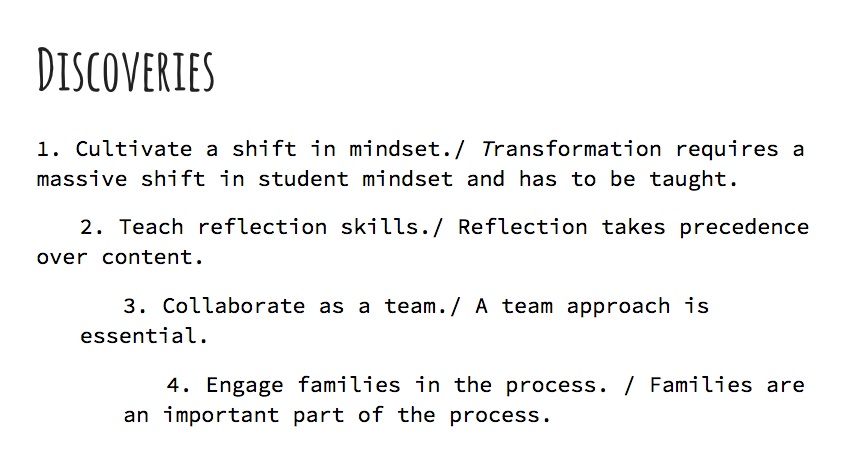
The first two have to do with school culture and classroom practice. One of my discoveries was how important it is to cultivate a shift in mindset. We’ve told students that they have to have these PLPs and they’re free to explore what they want; the PLPs of course are supposed to be a personal exploration of growth and learning, and yet we haven’t given them to tools in order to work or think independently. All these years of schooling where they’ve been told they have to get a certain grade or think a certain way.
I think these PLPs are amazing; but the students aren’t seeing that. They’re seeing them as extra work.
And their mindset is in a very particular place. It’s not an opportunity, it’s actually really terrifying to have to think independently, even if school doesn’t work for them right now.
The second discovery was that reflection skills are an essential component in making PLPs and goals something really successful for students. Emphasizing how to think about what you’ve learned and where that’s going to take you, and what next steps and revisions you can make in your learning and your habits based on what you’ve done, is really important.
It’s that critical thinking component.
The third discovery and the fourth have more to do with family and school connections. Going back to that idea that all of the 9th grade teachers had students set goals: we really need to collaborate as a team. We really need to have these conversations. Not just about what we’re doing with students, but how, together, we can make PLPs living goals rather than something that’s static and dead.
And having families be really actively involved in the process stimulates student acceptance of PLPs, their buy-in.
Implications for Practice
1. Cultivate a shift in student mindset
There’s a history teacher at my school, Kathy Cadwell, who works a lot with Socratic dialogue and Socratic seminars. She’s getting students to ask the questions rather than “do school”. I’m going to be working with her more next semester in working on questions and dialogues with my students so they can become more self-directed learners, but within a context that involves conversations in class, so it’s not high-stakes. Learning the skills to direct their own learning, that requires self-direction.
2. Teach reflection skills
Really work on teaching reflection skills. I found that having a tool for reflection, certain prompts, maybe an activity or project is something that I have to develop. The idea that I have to develop whether a student has done something with learning styles is more important than content. So the assessments I’m going to do next semester are going to be much more on reflection.
That involves adapting the content a little bit to develop those reflection skills, and working with the 9th grade Humanities teachers to coordinate what we’re doing with reflection, so the students are not just getting to do it in my class, but in all classes.
3. Develop a whole team approach
Simplify goal-setting so that students are focusing in on a few goals rather than multiple numbers of goals. Also working as a team to have students have 2-3 goals, but we’re all working together in our various classes to monitor what those goals are, and to help students track their progress.
Also educate teachers about PLPs. Right now at the high school, I’m the only teacher (to my knowledge) who has a working knowledge of PLPs and is doing anything with them. So what happens in my class stays in my class. Students work on PLPs with me, but not with anyone else. I’d really like to change that.
4. Develop family connections
Really develop those family connections in order to support students. Teach families the what, how and why of PLPs. That could be through an Open House event, or it could be through emails (which will probably be much easier given that this is second semester). Invite families to participate in the PLP development process — something that I’m going to be a little more intentional about than I was this semester.
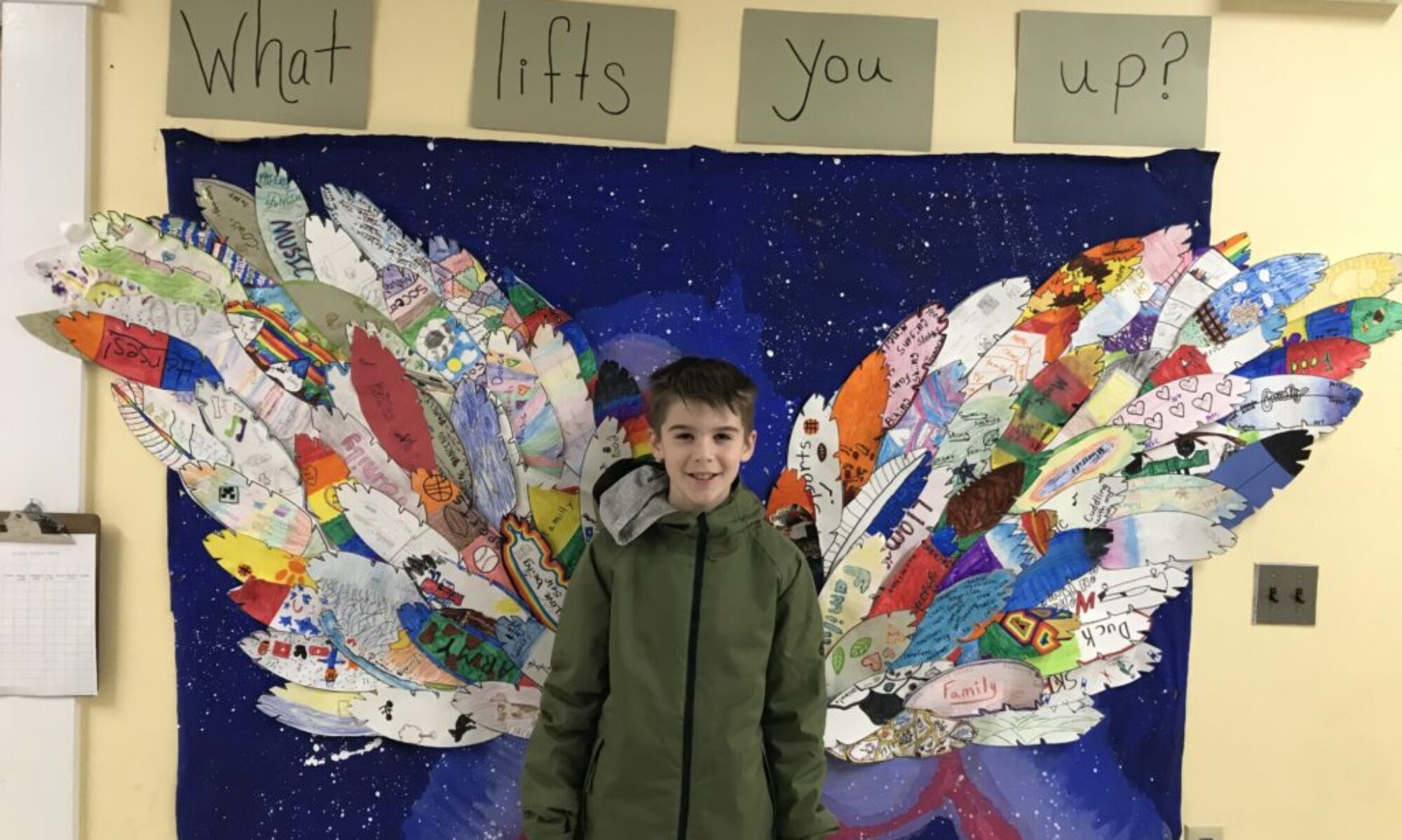

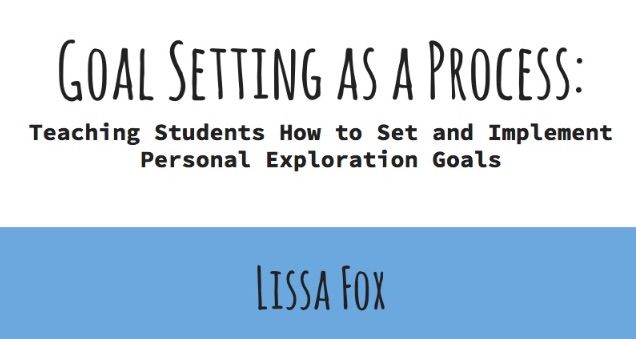
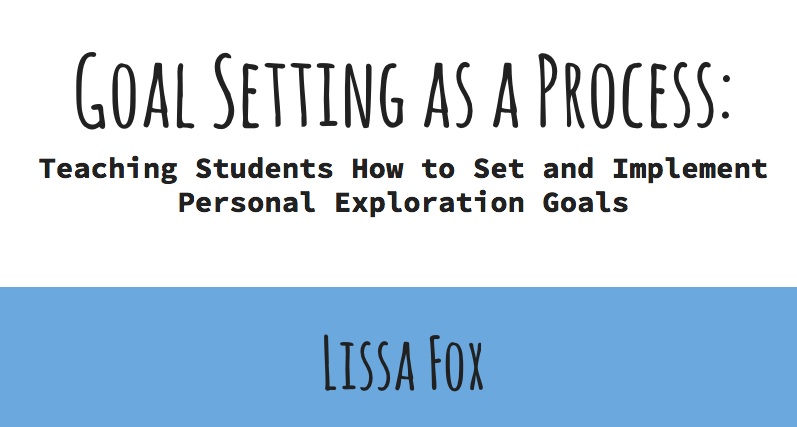
Teaching students how to set personal exploration goals #vted https://t.co/MdFraq2uI3 https://t.co/xr50VS7dKd
RT @innovativeEd: Teaching students how to set personal exploration goals #vted https://t.co/MdFraq2uI3 https://t.co/xr50VS7dKd
Today’s #mediamonday is another great piece out of the Tarrant Institute on goal setting. Thoughts?
https://t.co/ohMH7fSCSn @innovativeEd
RT @innovativeEd: Teaching students how to set personal exploration goals #vted https://t.co/MdFraq2uI3 https://t.co/xr50VS7dKd
From a practicing teacher: Teaching students how to set personal exploration goals https://t.co/NDTDIQFdpe via @innovativeEd
RT @mwolofson: From a practicing teacher: Teaching students how to set personal exploration goals https://t.co/NDTDIQFdpe via @innovativeEd
Teaching students how to set personal exploration goals https://t.co/3K1UJzHgXB #
Teaching students how to set personal exploration goals https://t.co/vBq5mAKMIr via @innovativeEd
Teaching #students how to set personal exploration goals – #Innovation https://t.co/SUWVNEBvKx via @rightrelevance thanks @jesslahey